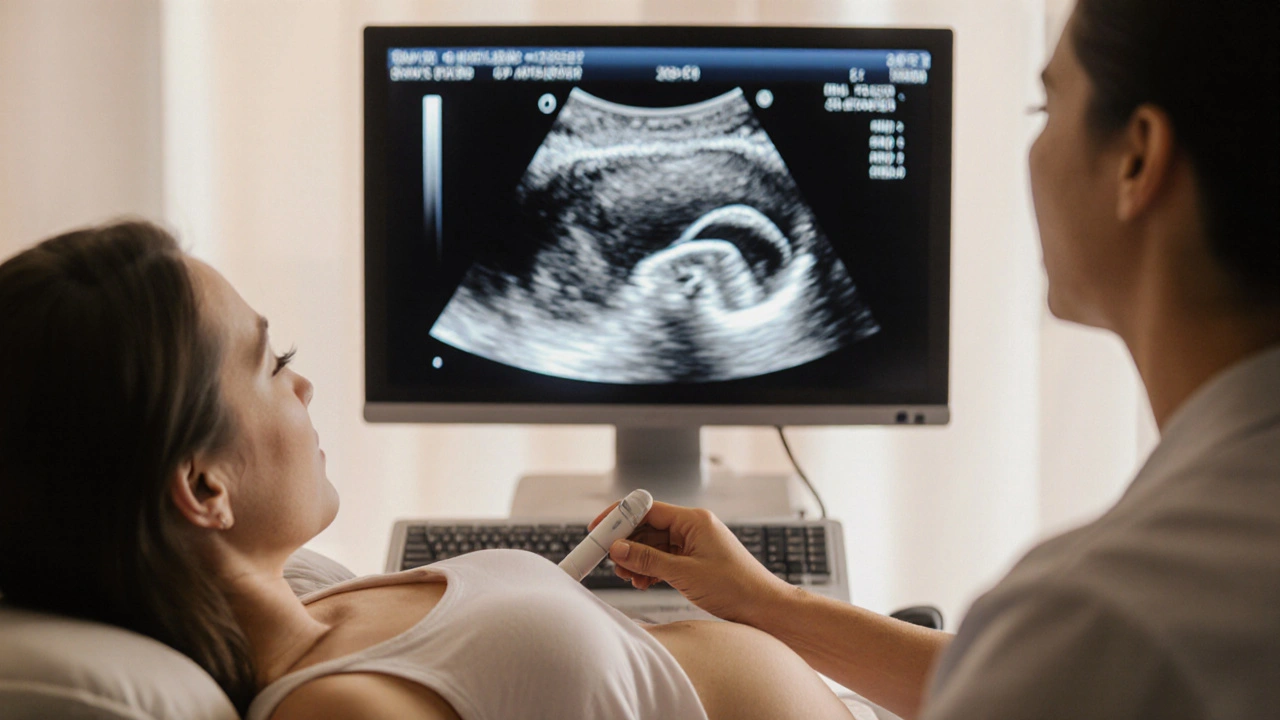

When working with neural tube defect screening, a set of tests that check for birth defects of the brain and spine early in pregnancy. Also known as NTD screening, it helps doctors spot problems before they become serious. Prenatal ultrasound, an imaging test that visualizes the developing fetus and can reveal spinal closure issues as early as 12 weeks is one of the most common tools. At the same time, a blood test that measures maternal serum α‑fetoprotein (AFP) gives a biochemical warning sign when levels are higher than expected. Together, these methods give a clearer picture of risk and guide next steps.
Why does this matter? Because a neural tube defect can lead to severe lifelong challenges, and early detection opens the door to treatment options, surgery planning, or even pregnancy‑specific decisions. The screening process doesn’t happen in a vacuum; it’s linked tightly to folic acid supplementation, the daily intake of a B‑vitamin that helps the neural tube close properly during the first weeks of development. Studies show that women who take the right amount of folic acid before conception and through the first trimester reduce the risk of these defects by up to 70%. That statistic isn’t just a number—it’s a call to action for anyone planning a pregnancy.
First, timing is crucial. The neural tube forms and closes within the first four weeks after fertilization, often before many women even realize they’re pregnant. That’s why doctors recommend a pre‑conception check‑up that includes a folic acid regimen and, if needed, a discussion about genetic risk factors. Genetic counseling enters the picture when there’s a family history of NTDs or known carrier status for related genes. The counselor explains how inheritance patterns work and what the screening results might mean for the baby and the family.
Second, the tests themselves have distinct roles. The prenatal ultrasound gives a visual roadmap—looking for signs like an open spinal canal or abnormal brain structures. Meanwhile, the AFP blood test catches hidden issues: elevated AFP can indicate an open neural tube defect, prompting a follow‑up detailed scan. If both ultrasound and AFP point to a problem, doctors may order a targeted ultrasound or even fetal MRI for a more detailed view. Each step builds on the previous one, creating a layered safety net.
Third, lifestyle factors weave into the screening story. Apart from folic acid, avoiding smoking, alcohol, and certain medications during early pregnancy lowers the chance of defects. Some medications, like certain anti‑seizure drugs, can increase risk, so doctors often adjust prescriptions after reviewing a patient’s screening plan. Nutrition, weight management, and chronic disease control—especially diabetes—also play a part. All these elements combine to shape a personalized screening strategy.
Finally, the outcomes of screening guide real decisions. If a defect is detected early, families have time to learn about surgical options, connect with specialists, and plan for any needed support after birth. In some cases, early detection leads to a decision to continue the pregnancy with prepared medical care; in others, it informs a choice to seek alternative paths. The goal of screening is not to scare but to empower with information.
In short, neural tube defect screening links imaging, blood tests, nutrition, and genetics into a coordinated approach. Below, you’ll find a curated collection of articles that dive deeper into each component—comparisons of medications that affect pregnancy, guides on buying safe generic drugs, and updates on related health topics. Explore the posts to see how the pieces fit together and to get practical tips you can use right away.

Learn how ultrasound detects spina bifida in unborn babies, optimal scan timing, accuracy, complementary tests, and what steps to take after a positive screen.